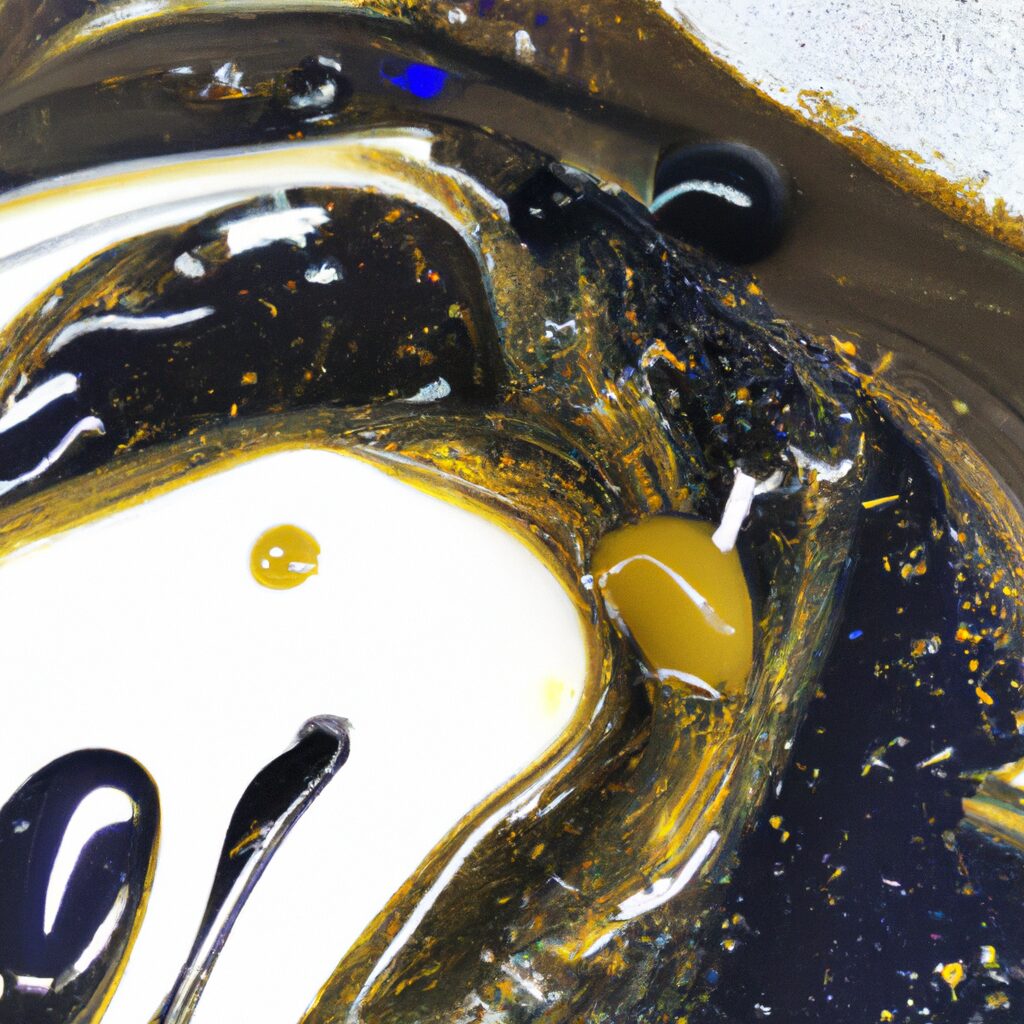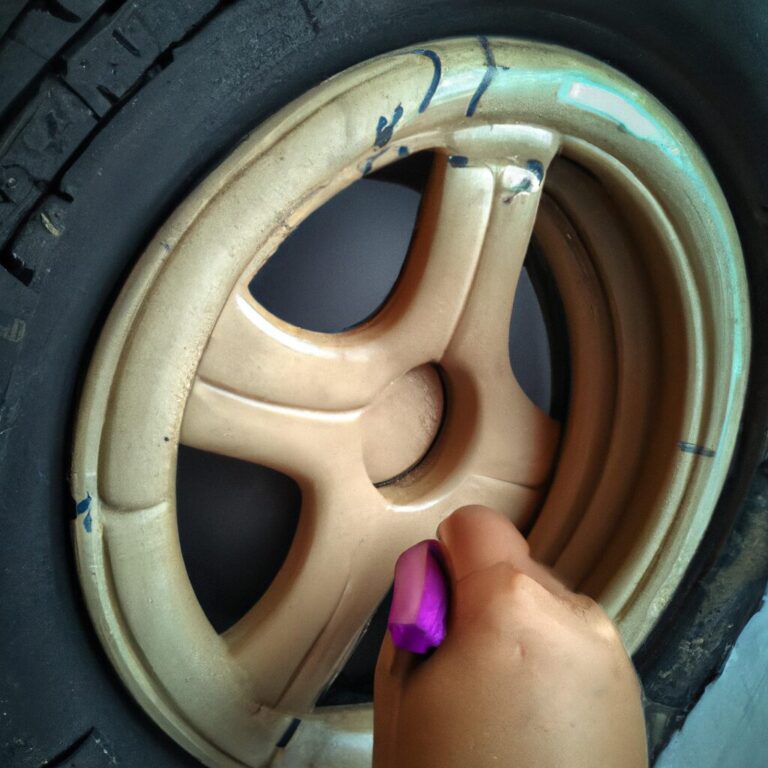glitter in engine oil
Introduction
Glitter in engine oil is a common problem that can cause serious damage to your engine. It is caused by tiny particles of metal, plastic, or other materials that have been broken down and mixed in with the oil. These particles can cause wear and tear on the engine components, leading to decreased performance and increased fuel consumption. In some cases, glitter in engine oil can even lead to engine failure. Fortunately, there are ways to prevent and remove glitter from engine oil, so you can keep your engine running smoothly.
The Dangers of Glitter in Engine Oil: What You Need to Know
Glitter in engine oil is a growing concern for many vehicle owners. While it may seem like a harmless addition to your engine, it can actually cause serious damage to your engine and other components. In this article, we will discuss the dangers of glitter in engine oil and what you need to know to protect your vehicle.
Glitter is a type of plastic that is often used in craft projects and decorations. It is made up of tiny pieces of plastic that are often coated with a metallic or colored finish. While it may seem harmless, glitter can be extremely abrasive and can cause damage to your engine if it gets into the oil.
When glitter gets into the oil, it can cause the oil to become thick and clog the oil filter. This can lead to decreased engine performance and increased wear on the engine components. Additionally, the glitter can cause the oil to become contaminated with particles that can damage the engine.
The glitter can also cause the oil to become acidic, which can corrode the engine components. This can lead to costly repairs and even engine failure.
To protect your vehicle from the dangers of glitter in engine oil, it is important to regularly check your oil filter and replace it when necessary. Additionally, you should avoid using glitter in any craft projects that involve your vehicle. If you do use glitter, make sure to clean it up thoroughly before you start your engine.
Finally, it is important to use the correct type of oil for your vehicle. Different types of oil have different levels of viscosity, which can affect how well the oil flows through the engine. Using the wrong type of oil can cause the oil to become too thick and clog the filter, leading to decreased engine performance and increased wear on the engine components.
By following these simple steps, you can help protect your vehicle from the dangers of glitter in engine oil. Remember, it is always better to be safe than sorry when it comes to your vehicle.
How to Identify Glitter in Engine Oil
Engine oil is a vital component of any vehicle, and it is important to ensure that it is in good condition. One of the most common problems that can occur with engine oil is the presence of glitter. Glitter in engine oil can be caused by a variety of factors, and it is important to identify it in order to prevent further damage to the engine.
The first step in identifying glitter in engine oil is to inspect the oil visually. Glitter will appear as small, shiny particles suspended in the oil. It is important to note that glitter can be caused by a variety of factors, including metal shavings, dirt, and other contaminants. Therefore, it is important to inspect the oil closely to ensure that the glitter is not caused by something else.
The next step in identifying glitter in engine oil is to perform a simple test. To do this, take a sample of the oil and place it on a white piece of paper. If the glitter is present, it will be visible on the paper. If the glitter is not visible, then it is likely that it is not present in the oil.
Finally, if the glitter is present, it is important to determine the cause. Glitter can be caused by a variety of factors, including metal shavings, dirt, and other contaminants. If the glitter is caused by metal shavings, then it is likely that the engine is in need of repair. If the glitter is caused by dirt or other contaminants, then it is important to clean the engine and replace the oil.
Identifying glitter in engine oil is an important step in ensuring that the engine is in good condition. By visually inspecting the oil and performing a simple test, it is possible to determine if glitter is present and identify the cause. Once the cause is identified, it is important to take the necessary steps to repair or replace the engine oil in order to prevent further damage.
The Benefits of Using Glitter in Engine Oil
The use of glitter in engine oil has become increasingly popular in recent years, as it offers a number of benefits to vehicle owners. Glitter is a type of additive that is added to engine oil to improve its performance and extend its life. It is composed of tiny particles of metal, ceramic, or plastic that are suspended in the oil.
The primary benefit of using glitter in engine oil is that it helps to reduce friction between moving parts. This reduces wear and tear on the engine, which can help to extend its life. Additionally, glitter helps to reduce the amount of heat generated by the engine, which can help to improve fuel efficiency.
Glitter also helps to reduce the amount of sludge and other contaminants that can build up in the engine. This can help to improve the performance of the engine and reduce the risk of damage due to corrosion. Additionally, glitter helps to reduce the amount of oil that is lost through evaporation, which can help to reduce emissions.
Finally, glitter can help to improve the appearance of the engine. The particles of glitter reflect light, which can give the engine a more attractive look. This can be especially beneficial for those who are looking to improve the aesthetic appeal of their vehicle.
Overall, the use of glitter in engine oil can provide a number of benefits to vehicle owners. It can help to reduce friction, improve fuel efficiency, reduce sludge and contaminants, and improve the appearance of the engine. For these reasons, many vehicle owners are now choosing to use glitter in their engine oil.
The Best Ways to Remove Glitter from Engine Oil
Removing glitter from engine oil can be a tricky task, but it is important to do so in order to ensure the engine runs smoothly and efficiently. Glitter can get into engine oil through a variety of sources, such as a spark plug wire, a fuel injector, or a valve cover gasket. Fortunately, there are several methods that can be used to effectively remove glitter from engine oil.
The first method is to use a vacuum cleaner. Vacuuming the engine oil can help to remove any glitter that has settled in the oil. It is important to use a vacuum cleaner that is specifically designed for engine oil, as regular vacuum cleaners may not be able to handle the job.
The second method is to use a filter. A filter can be used to filter out any glitter that is present in the engine oil. It is important to use a filter that is specifically designed for engine oil, as regular filters may not be able to handle the job.
The third method is to use a magnet. Magnets can be used to attract any glitter that is present in the engine oil. It is important to use a magnet that is specifically designed for engine oil, as regular magnets may not be able to handle the job.
The fourth method is to use a solvent. Solvents can be used to dissolve any glitter that is present in the engine oil. It is important to use a solvent that is specifically designed for engine oil, as regular solvents may not be able to handle the job.
Finally, the fifth method is to use a centrifuge. A centrifuge can be used to separate any glitter that is present in the engine oil. It is important to use a centrifuge that is specifically designed for engine oil, as regular centrifuges may not be able to handle the job.
By following these steps, it is possible to effectively remove glitter from engine oil. It is important to remember to use the appropriate tools and materials for each step, as regular tools and materials may not be able to handle the job. Additionally, it is important to remember to dispose of any glitter that is removed from the engine oil in a safe and responsible manner.
The Impact of Glitter on Engine Performance
The impact of glitter on engine performance is an important consideration for those who use glitter in their vehicles. Glitter is a type of decorative material that is often used to add sparkle and shine to a vehicle’s interior or exterior. While glitter can be aesthetically pleasing, it can also have a negative impact on engine performance.
Glitter is made up of tiny particles of plastic or metal that can be easily ingested by an engine. When these particles enter the engine, they can cause a variety of problems. The particles can clog the air filter, reducing the amount of air that can enter the engine. This can lead to a decrease in engine power and efficiency. Additionally, the particles can cause wear and tear on the engine components, leading to increased maintenance costs.
The particles can also cause damage to the fuel system. The particles can clog fuel injectors, leading to a decrease in fuel efficiency. Additionally, the particles can cause corrosion in the fuel system, leading to a decrease in engine performance.
Finally, the particles can cause damage to the exhaust system. The particles can clog the exhaust system, leading to a decrease in engine performance. Additionally, the particles can cause corrosion in the exhaust system, leading to a decrease in engine performance.
In conclusion, glitter can have a negative impact on engine performance. The particles can clog the air filter, fuel system, and exhaust system, leading to a decrease in engine power and efficiency. Additionally, the particles can cause wear and tear on engine components, leading to increased maintenance costs. Therefore, it is important to consider the impact of glitter on engine performance before using it in a vehicle.
How to Properly Dispose of Glitter-Contaminated Engine Oil
Engine oil contaminated with glitter presents a unique challenge when it comes to disposal. Glitter is a type of microplastic, which is a pollutant that can cause harm to the environment if not disposed of properly. To ensure that glitter-contaminated engine oil is disposed of safely and responsibly, it is important to follow the steps outlined below.
First, it is important to separate the glitter from the oil. This can be done by using a filter or strainer to remove the glitter from the oil. Once the glitter has been removed, it should be placed in a sealed container and disposed of in the trash.
Next, the oil should be disposed of in accordance with local regulations. In some areas, it may be possible to recycle the oil. If recycling is not an option, the oil should be taken to a hazardous waste facility for proper disposal.
Finally, it is important to clean up any remaining glitter that may have been spilled during the process. Glitter should never be washed down the drain, as it can cause blockages and damage to the plumbing system. Instead, it should be swept up and placed in a sealed container for disposal in the trash.
By following these steps, it is possible to properly dispose of glitter-contaminated engine oil and help protect the environment.
The Latest Research on Glitter in Engine Oil
Glitter in engine oil has become a topic of increasing interest in recent years. As the name implies, glitter in engine oil is a type of contamination that can occur in motor oil, and it is caused by the presence of tiny particles of metal or other materials. These particles can be extremely small, and they can cause significant damage to an engine if left unchecked.
Recent research has been conducted to better understand the effects of glitter in engine oil. One study found that glitter particles can cause wear and tear on engine components, leading to reduced engine performance and increased fuel consumption. Additionally, the particles can cause blockages in the oil filter, leading to a decrease in oil pressure and an increase in engine temperature.
In addition to the wear and tear caused by glitter particles, the particles can also cause corrosion of engine components. This corrosion can lead to a decrease in engine efficiency and an increase in emissions. Furthermore, the particles can also cause a decrease in the lubrication of engine components, leading to increased friction and wear.
Finally, glitter particles can also cause a decrease in the viscosity of the oil, leading to a decrease in the oil’s ability to lubricate the engine. This can lead to increased wear and tear on engine components, as well as increased fuel consumption.
Overall, the research indicates that glitter in engine oil can have a significant impact on engine performance and fuel efficiency. It is important for vehicle owners to be aware of the potential risks associated with glitter in engine oil and to take steps to prevent it from occurring. This can include regularly changing the oil and using high-quality oil filters. Additionally, vehicle owners should be sure to inspect their engine oil regularly for signs of contamination.
The Pros and Cons of Using Glitter in Engine Oil
Glitter has become a popular additive to engine oil in recent years, as it is believed to improve engine performance and reduce wear and tear. While glitter may have some benefits, it is important to consider the potential drawbacks before using it in your engine oil.
Pros
One of the main benefits of using glitter in engine oil is that it can help reduce friction between moving parts. This can help to reduce wear and tear on the engine, which can extend its lifespan and improve its performance. Additionally, glitter can help to reduce the amount of heat generated by the engine, which can help to prevent overheating.
Another benefit of using glitter in engine oil is that it can help to reduce the amount of oil that is lost through evaporation. This can help to reduce the amount of oil that needs to be replaced, which can save money in the long run.
Cons
One of the main drawbacks of using glitter in engine oil is that it can be difficult to remove from the engine. If the glitter is not removed properly, it can cause clogs and blockages in the engine, which can lead to serious damage. Additionally, glitter can be abrasive, which can cause further damage to the engine.
Another potential drawback of using glitter in engine oil is that it can be expensive. Glitter is not a cheap additive, and it can add significantly to the cost of engine oil. Additionally, glitter can be difficult to find, as it is not widely available in most stores.
In conclusion, glitter can have some benefits when used in engine oil, but it is important to consider the potential drawbacks before using it. If you decide to use glitter in your engine oil, it is important to make sure that it is removed properly to avoid any potential damage to the engine.
Q&A
Q: What is glitter in engine oil?
A: Glitter in engine oil is a term used to describe small metallic particles that are suspended in the oil. These particles can be caused by wear and tear on the engine components, or they can be caused by contamination from outside sources.
Conclusion
In conclusion, glitter in engine oil is not a good idea. It can cause damage to the engine and reduce its efficiency. It can also clog filters and cause other problems. Therefore, it is best to avoid using glitter in engine oil.



